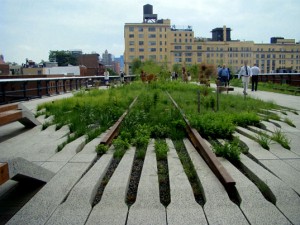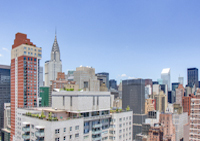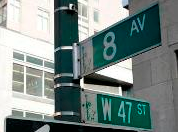 How quickly we forget. 10 years ago, the High Line was a rusted artifact, a blight on West Chelsea, and a large part of the reason that West Chelsea remained underdeveloped and cheaper to rent in than Chelsea itself. West Chelsea has always been something of a separate neighborhood because of its industrial character, slightly out-of-the-way location, and cheap rents relative to the rest of Chelsea and other downtown neighborhoods. However, the High Line changed everything, and that’s not an exaggeration: Rents in West Chelsea now exceed rents in Chelsea, consequently pulling them upward and enhancing the neighborhood as a whole. In fact, rents for luxury apartments in West Chelsea have become similar to neighborhoods like SoHo and Tribeca, Manhattan's most expensive and coveted neighborhoods. Renters looking for great new luxury rentals should look to West Chelsea, because condo owners are cashing in on this sudden popularity by renting out their apartments, giving renters a unique opportunity to live in a neighborhood rich in culture and on the rise.
How quickly we forget. 10 years ago, the High Line was a rusted artifact, a blight on West Chelsea, and a large part of the reason that West Chelsea remained underdeveloped and cheaper to rent in than Chelsea itself. West Chelsea has always been something of a separate neighborhood because of its industrial character, slightly out-of-the-way location, and cheap rents relative to the rest of Chelsea and other downtown neighborhoods. However, the High Line changed everything, and that’s not an exaggeration: Rents in West Chelsea now exceed rents in Chelsea, consequently pulling them upward and enhancing the neighborhood as a whole. In fact, rents for luxury apartments in West Chelsea have become similar to neighborhoods like SoHo and Tribeca, Manhattan's most expensive and coveted neighborhoods. Renters looking for great new luxury rentals should look to West Chelsea, because condo owners are cashing in on this sudden popularity by renting out their apartments, giving renters a unique opportunity to live in a neighborhood rich in culture and on the rise.
This veritable explosion in popularity isn’t hard to explain, because the advent of the High Line serves as a clear line of demarcation between past and future. Just look at the numbers. When the High Line opened its second section between 20th and 30th Street in June, Mayor Bloomberg announced in the the dedication ceremony that, “Since work on the High Line began, we've seen the development of or planning for more than $2 billion in private investment, adding thousands of new residential units, thousands of new jobs, 1,000 new hotel rooms, and new restaurants, galleries and shops." To be more specific, 29 new developments - mostly residential - are either already open or in the works, and 12,000 new jobs have been created. He should have also mentioned that The Standard Hotel and Whitney Museum are now moving in, and that the Hudson Yards project has renewed momentum because of the soon-to-be-opening Section 3 High Line extension between 30th and 34th Street, although the planned 7 line extension to the Javits Center also helped.
West Chelsea was the ideal place for this development because it was one of the few neighborhoods that actually had space to build. Developers jumped on this opportunity to build luxury condos, which is exactly what they haven’t been able to do because of post-Lehman financing issues, making West Chelsea one of the few fertile areas for new construction of luxury condos. Needless to say, the rental market in West Chelsea surged upwards after the High Line opened. Now, owners of condos and co-ops in West Chelsea are cashing-in too. For instance, the owner of a condo on 456 West 19th Street is renting their 2-bedroom apartment for $25,000 a month, same goes for a 2-bedroom condo on 436 West 20th Street available for $9,500 a month. So it’s no wonder that a one-bedroom luxury condo in 420 West 25th Street is going for $5,500 a month, a price indicative of what you'll find in the neighborhood as a whole.
If you want a deal in Chelsea, look for smaller apartments. MNS documented that the average rent for a non-doorman studio in Chelsea is $1,937, which is significantly less than any other kind of luxury apartment in the area; even doorman studios are leasing for an average of $2,714 a month. Doorman and non-doorman rents for 1-bedrooms average $3,797 and $2,952 respectively, offering pretty good deals as well. Don’t count on finding rents like that in West Chelsea though, because rents in that neighborhood are almost uniformly above the average. Very few people would’ve ever guessed a few years ago that luxury rentals in West Chelsea would actually be more popular than Chelsea proper, but that’s exactly what’s happened thanks to the High Line. Maybe it’s time to consider West Chelsea as its own neighborhood. After all, the High Line has given this Manhattan district something invaluable: a new identity.





